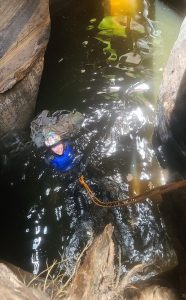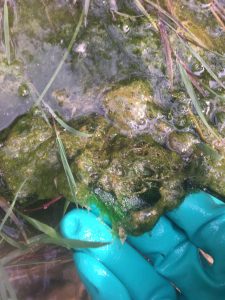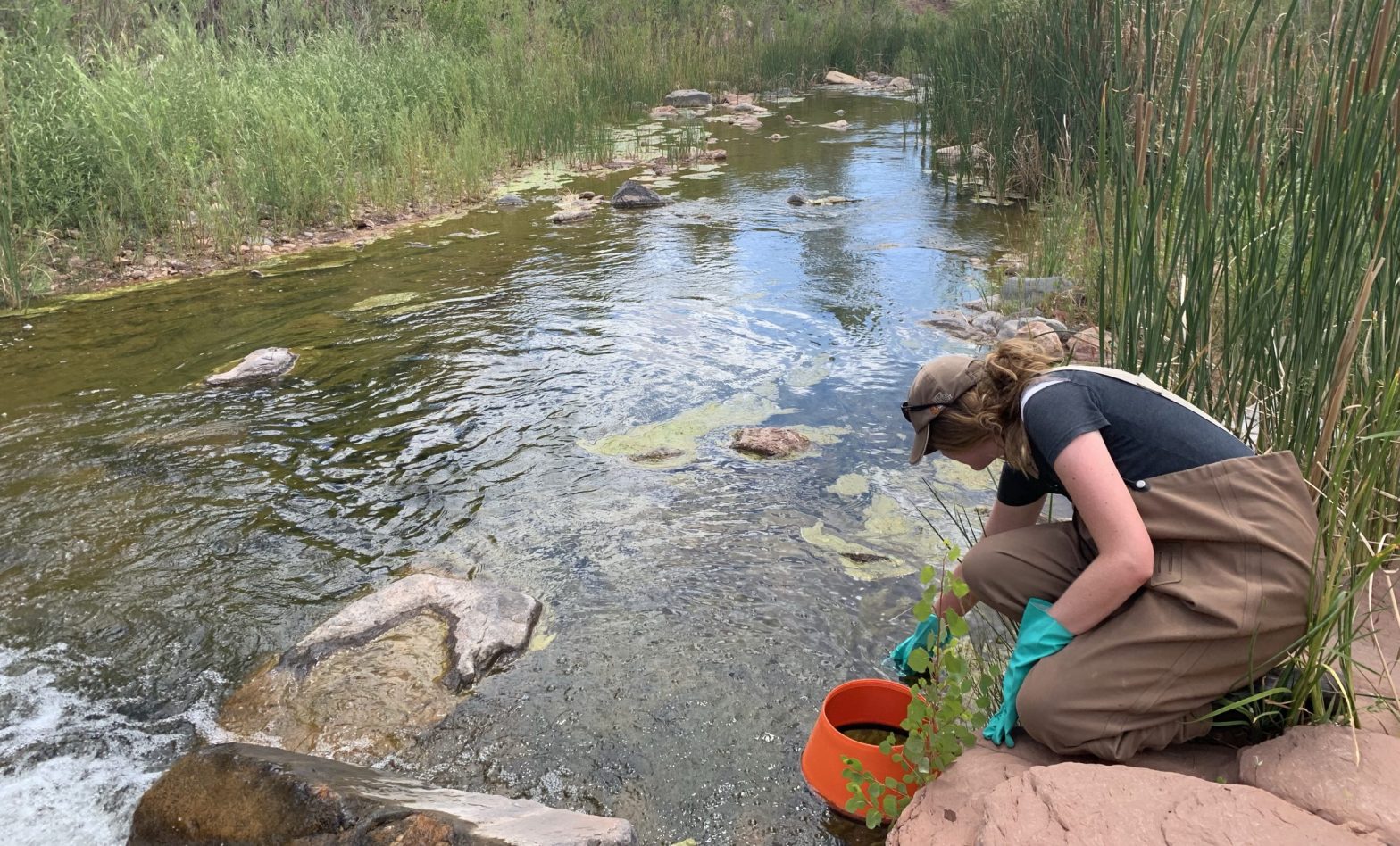Have you ever learned or heard about something new and then – bam! – suddenly you see it everywhere? This is called the Baader-Meinhof phenomenon. It describes a cognitive bias in which people are more likely to recognize a specific thing frequently after noticing it for the first time.

The past month I have experienced intense cyanobacteria Baader-Meinhof. I see cyanobacteria everywhere: it’s growing on the rocks along my most recent hike; it’s filling in the irrigation channel next to my office; it’s sprouting from the fountain by the ice cream place in town; it’s creeping into the pothole I have to swim across for a weekend canyoneering trip.
Seeing cyanobacteria everywhere kind of starts to freak you out. Like I mentioned in my first blog post, it’s potentially toxic. And frankly, sometimes you don’t want to know you’re swimming in a pool with potentially toxic cyanobacteria.
Ignorance is bliss, right?
In some ways though, experiencing the Baader-Meinhof phenomenon makes me really appreciate the opportunity to be here as a Scientists in Parks Fellow.
Cyanobacteria is everywhere whether we notice it or not. My research means I notice it and that I also get to sample it, observe it, understand it, and advise how Zion National Park responds to it.

As such, Baader-Meinhof isn’t just a killjoy, making me extra cautious around water features. It also is a reminder that my work is important, applied, and highly pertinent. It is a promise that the natural world is beautifully complex and still holds so many questions to be explored. And that is exciting!
So, who knows – if you keep reading these posts, you may start seeing cyanobacteria everywhere too. Ultimately, I think that’s a good thing.

